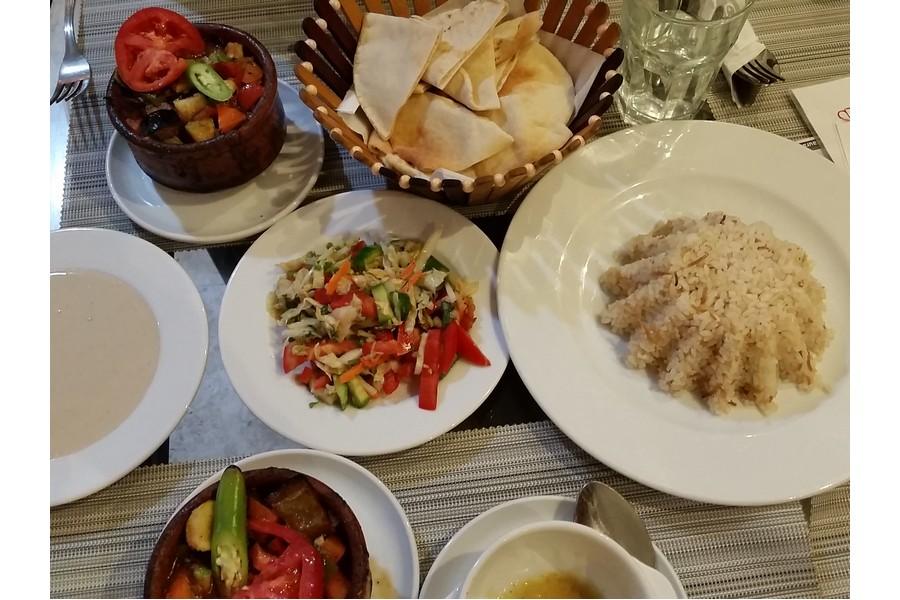Worlds Ahead, 5000 years ago
Country
Ancient Egypt was one of the oldest and longest lasting world civilizations, spanning over three thousand years. Historians generally use two ways to outline the history of Ancient Egypt. The first is by using the different Dynasties that ruled Egypt. A dynasty was a family that had power and passed the leadership of Pharaoh down from one family member to another. There were 30 dynasties over the course of 3000 years. The second is by analysing Kingdoms and Periods. There were three primary kingdoms, the Old, Middle and New Kingdoms.
In an attempt to explore the history of Egypt in some semblance of order, we took a day trip to Saqqara, Dahshur and Memphis which placed us in the Early Dynastic Period, right at the very dawn of Ancient Egyptian civilization.
Early Dynastic Period (2950 -2575 BC) - Dynasties I-III
The Ancient Egyptian civilization begins. The first Pharaoh of Egypt, Menes, united the Upper and Lower parts of Egypt into a single civilization. He put the capital at the midpoint of the two lands in a city called Memphis. During this time the Egyptians developed hieroglyphic writing. Near the end of the Dynastic Period and the start of the Old Kingdom, the first pyramid (the Step Pyramid) is built by the Pharoah Djoser and the famous Egyptian Architect Imhotep.
Our first stop was the Step Pyramid Complex at Saqqara, built in 2700 BC by the King Netjjerykhet, also known as Pharoah Djoser. This pyramidal funerary complex is considered the first large-scale stone construction in history and an important phase in the evolution of royal tomb conception towards a full pyramid shape. We descended a super long, steep and low ceilinged tunnel and experienced what would be the first of many jaw dropping moments when seeing carved hieroglyphs up close and personal. My trigger finger, not heading the no photography warnings, may have just captured a sighting of our very first hieroglyph…
The Red Pyramid in Dahshur is the oldest royal tomb in pure pyramid form, providing a model followed in later royal burials. Its colour derives from a reddish tint in the limestone that was used. Not far away, the Bent Pyramid was most likely built before the Red Pyramid and it is unknown why half way up, the walls change dramatically from one angle of incline, that being 54 degrees to 43 degrees.
Our last stop for the day was the ruins of the old capital, Memphis. A sign said “To talk about Egypt without mentioning Memphis is like talking about Italy without reference to Rome”. Memphis is the birthplace of Egypt as we know it today. It was once a cosmopolitan city of temples, settlements and palaces.
During the later Middle Kingdom, the seat of political power shifted however Memphis remained as an important commercial and artistic centre. Kings would often construct monuments in this ancient capital, including Ramesses II (1279–1213 BC), perhaps better known as “Ramesses the Great”. Ramesses II, was a prolific builder, particularly of statues of himself. Beautifully restored and preserved in an enclosed viewing area at the Memphis site, is a 10m long statue of Ramesses II that was discovered by an Italian explorer in 1820 lying face down in a river in Memphis. The craftsmanship was simply amazing.
Our New Year calendar change was looming, so on New Year’s Eve we relocated from Downtown Cairo to Giza, home of the Great Pyramids of Egypt. We were now primed to explore the Old Kingdom, and to follow Dale’s and my tradition of welcoming in a new year by being somewhere special. Where better this year than to see the first sunrise of the New Year, directly in front of the Great Sphinx and the Great Pyramids.
Old Kingdom (2575-2150 BC) - Dynasties IV-VIII
The fourth dynasty begins and the Great Pyramids of Giza and the Sphinx are built. This is often called the Age of the Pyramids. The fourth dynasty is a time of peace and also a time when the sun god Re became prominent in the Egyptian religion. The Old Kingdom nears its end as the 7th and 8th dynasties are weak and the government begins to collapse. The end of the Old Kingdom is a time of poverty and famine.
On New Year’s Eve we enjoyed watching the Great Pyramid Sound & Light Show from our guest house balcony. We were frozen, but it was worth every wisp of cold wind to see the coloured lights shine on the Sphynx and Khufu’s Great Pyramid…













